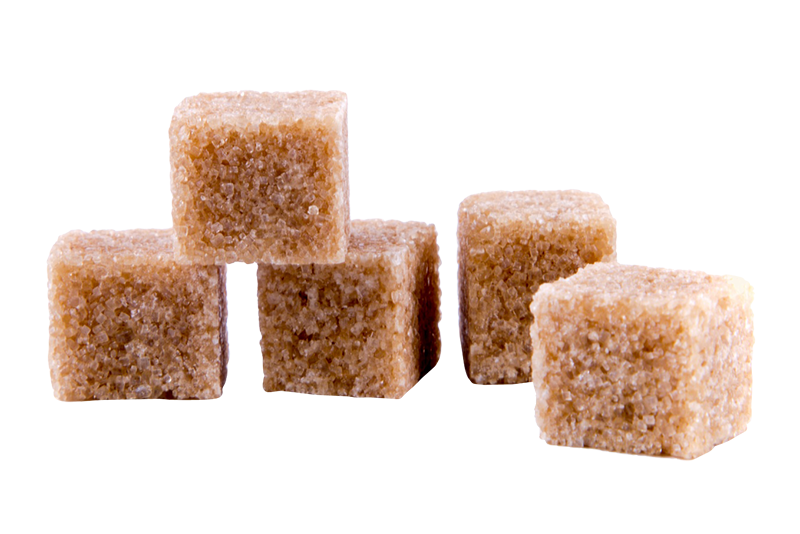Comprehending Cane Sugar Processing: A Comprehensive Introduction of the Stages
Comprehending Cane Sugar Processing: A Comprehensive Introduction of the Stages
Blog Article
An In-Depth Guide to the Environmental Effect and Sustainability Practices in Walking Cane Sugar Handling
The ecological influence of cane sugar processing offers a complex array of obstacles that warrant careful exam. From soil degradation and too much water usage to the carbon footprint related to cultivation and production, the repercussions of typical practices are far-ranging. On the other hand, the adoption of ingenious sustainability measures offers a path towards a lot more responsible manufacturing approaches. Recognizing the interplay in between these concerns is important for stakeholders in the market. What particular practices can be implemented to strike an equilibrium in between efficiency and environmental stewardship? The answers hinge on a closer look at both the challenges and prospective services.
Overview of Walking Stick Sugar Processing
Cane sugar processing involves a collection of methodical steps that change sugarcane right into polished sugar. Initially, collected sugarcane is carried to refining facilities, where it goes through cleansing to remove dirt and debris. Following this, the cane is crushed to draw out juice, which is then cleared up by getting rid of pollutants through home heating and the addition of lime.
The clarified juice undergoes evaporation, where water is gotten rid of to concentrate the sugar web content. This focused syrup is then taken shape via cooling, permitting sugar crystals to form. These crystals are separated from the staying syrup making use of centrifugation, resulting in raw sugar. To accomplish polished sugar, the raw item undergoes additional filtration procedures, which may consist of filtering system and cleaning to eliminate staying pollutants and shade.
The end product is then dried out and packaged for circulation. Throughout this whole process, preserving performance and top quality control is necessary to ensure the sugar meets industry requirements. Each step in walking stick sugar handling not only adds to the end product but also has implications for resource use and waste generation, setting the phase for conversations on sustainability and ecological influences connected with sugar manufacturing.
Environmental Challenges of Production
The production of cane sugar presents a number of considerable environmental difficulties that warrant attention. One primary issue is the substantial use of agrochemicals, including fertilizers and chemicals, which can lead to dirt deterioration, biodiversity loss, and contamination of regional water sources. The runoff from sugarcane areas often lugs these chemicals right into neighboring ecosystems, interfering with water life and impacting the health of communities reliant on these water bodies.
An additional difficulty is the high energy intake related to sugarcane handling. The boiling and refining phases require substantial warmth, mainly generated by melting nonrenewable fuel sources, contributing to greenhouse gas emissions. In addition, the large acreage required for sugarcane cultivation can cause deforestation and environment damage, further aggravating environment change and harmful wild animals.
In addition, the labor methods in some regions increase ethical worries, as workers might face bad working conditions and inadequate incomes. This scenario commonly perpetuates a cycle of destitution in local neighborhoods. Cane Sugar Processing. Addressing these ecological challenges is critical for creating extra sustainable methods in cane sugar production, inevitably benefiting both the atmosphere and the neighborhoods associated with this industry
Water and Land Use Influence
Water resources and land usage are essential components in the walking cane sugar market that considerably influence the environment. The growing of sugarcane calls for substantial water input, with estimates suggesting that it can eat approximately 2,000 liters of water per kilogram of sugar created. This extensive use of water commonly leads to depletion of regional water sources, influencing not just the sugarcane haciendas but also surrounding ecosystems and neighborhoods that depend on the very same water resources for farming and residential usage.

Moreover, land use for sugarcane growing can lead to logging and the conversion of all-natural habitats right into monoculture plantations. This method diminishes biodiversity, interrupts local ecological communities, and contributes to dirt degradation. The growth of sugarcane areas frequently elbows in on important farming land, developing competition for resources in between food and biofuel production.
Lasting techniques, such as optimizing watering strategies and carrying out plant turning, are vital to minimize these impacts. By adopting more reliable water usage and land administration methods, the walking cane sugar industry can decrease its environmental impact, making certain a balance between agricultural efficiency and environmental preservation.
Greenhouse Gas Emissions
Greenhouse gas discharges represent a substantial ecological problem within the cane sugar processing industry, particularly as farming methods increase to fulfill international need. The farming of sugarcane, a plant that prospers in exotic environments, counts heavily on synthetic plant foods and chemicals, which add to laughing gas discharges. Furthermore, land-use modifications, consisting of deforestation for new sugarcane haciendas, launch co2 saved in plant life and dirt.
Throughout handling, energy consumption is an additional significant resource of greenhouse gas exhausts - Cane Sugar Processing. Lots of sugar mills utilize fossil fuels to power equipment and produce heat, causing significant carbon footprints. Furthermore, the transport of raw sugarcane and completed products adds layers of exhausts with fuel burning in cars
The cumulative result of these emissions aggravates environment change, posturing dangers not only to the atmosphere however likewise to the lasting viability of the industry. Stakeholders have to acknowledge the immediate demand for their explanation extensive strategies that deal with these emissions. This includes assessing existing agricultural methods, processing techniques, and transport systems to determine locations for improvement and reduction. Dealing with greenhouse gas exhausts is essential for promoting an extra sustainable walking stick sugar sector in an altering environment.

Lasting Practices and Innovations
Sustainable techniques and technologies are progressively vital in the walking cane sugar processing sector as stakeholders seek to lower environmental influences while maintaining performance. One considerable advancement is the application of integrated plant monitoring, which enhances source use by incorporating soil monitoring, insect control, and plant rotation strategies. This method boosts yield while lessening chemical inputs and preserving soil wellness.
Furthermore, the fostering of renewable energy resources, such as biomass from sugarcane residues, has obtained traction - Cane Sugar Processing. By converting waste items into power, refining facilities can minimize their dependence on fossil fuels, consequently decreasing greenhouse gas emissions
Water administration techniques have likewise seen renovations via the recycling and reusing of water in processing plants, significantly minimizing freshwater intake. Innovations in technology, such as precision farming, make it possible for farmers to monitor crop health and wellness and source use better, guaranteeing sustainable growing techniques.
In addition, certification programs like Fair Trade and Rainforest Alliance encourage environmentally accountable farming methods and promote social equity within the supply chain. By accepting these sustainable methods and advancements, the walking stick sugar handling sector can enhance its resilience and add favorably to ecological stewardship.
Verdict
The ecological influence of walking stick sugar handling provides considerable difficulties, including soil degradation, high water consumption, and greenhouse gas emissions, alongside ethical concerns related to labor techniques. Resolving these concerns with sustainable practices, such as incorporated plant monitoring, sustainable energy fostering, and water recycling, is crucial. By advertising socially equitable and eco accountable methods in sugar production, the sector can alleviate its unfavorable effects, making certain a much more sustainable future for both ecosystems and areas entailed in this industry.
Cane sugar handling includes a collection of methodical steps that change sugarcane into polished sugar. Each step in walking cane sugar processing not just contributes to the last item however also has effects for resource usage and waste generation, setting the stage for conversations on sustainability and environmental influences connected with sugar manufacturing.
Greenhouse gas discharges stand for a considerable ecological worry try this web-site within the cane other sugar processing sector, particularly as farming methods increase to satisfy international demand.Lasting techniques and advancements are increasingly important in the walking cane sugar processing market as stakeholders look for to lower environmental effects while keeping productivity.The ecological influence of cane sugar processing provides substantial challenges, including dirt destruction, high water consumption, and greenhouse gas discharges, along with moral issues associated to labor methods.
Report this page